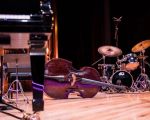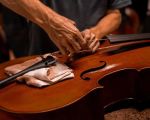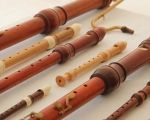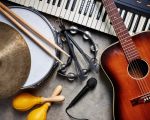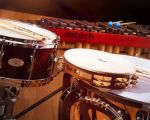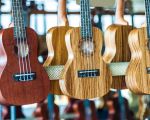- 1-Expert-tips-on-setting-up-a-home-recording-studio-overview
- 2-Essential-equipment-for-your-home-recording-studio
- 3-Optimizing-acoustics-for-better-sound-quality
- 4-Workflow-and-organization-in-your-home-studio
- 5-Real-world-examples-and-personal-experience
- 6-Where-to-find-the-best-recording-studio-equipment
1. Expert Tips on Setting Up a Home Recording Studio Overview
Setting up a home recording studio can seem daunting, but with the right guidance, it becomes an exciting journey toward creating your personal creative space. Expert tips on setting up a home recording studio focus on balancing budget, space, equipment, and sound quality to achieve professional results at home. Whether you’re a musician, podcaster, or producer, the foundation lies in understanding what your goals are and how to design a studio environment that supports them effectively.
This article breaks down the essential steps and considerations, helping you navigate everything from choosing the right gear to optimizing your room’s acoustics and managing workflow efficiently.
1.1. Why Having a Well-Set Home Studio Matters
A properly set up home recording studio doesn’t just improve sound quality; it enhances creativity and productivity. Poor setup can lead to frustrating recording sessions, inaccurate mixes, and ultimately, compromised results. Experts stress the importance of starting with the right mindset and planning carefully to avoid common pitfalls.
2. Essential Equipment for Your Home Recording Studio
The backbone of any home recording studio is its equipment. While high-end gear can be tempting, prioritizing the right components for your needs yields better results than overspending on unnecessary tools.
2.1. Audio Interface and Microphones
An audio interface connects your instruments and microphones to your computer, making it a critical piece. Quality interfaces reduce latency and enhance sound clarity. For microphones, a versatile condenser mic suits vocals and acoustic instruments, while dynamic mics excel in louder environments.
2.2. Studio Monitors and Headphones
Monitoring your sound accurately requires reliable studio monitors and headphones. Monitors offer a neutral sound profile essential for mixing, while headphones provide an alternative for detailed listening, especially in untreated rooms.
2.3. Digital Audio Workstation (DAW) Software
Your DAW is the software that records, edits, and mixes your audio. Popular options vary by user preference, but all should support your workflow and hardware compatibility.
3. Optimizing Acoustics for Better Sound Quality
Even the best equipment can’t compensate for poor room acoustics. Acoustic treatment is a crucial step that many beginners overlook.
3.1. Understanding Room Characteristics
Rooms with hard surfaces create reflections and echoes that distort sound. Identifying problem areas and applying acoustic panels, bass traps, and diffusers can dramatically improve recording and mixing accuracy.
3.2. Practical Acoustic Treatment Solutions
If budget or space limits your options, simple steps like using heavy curtains, rugs, or bookshelves can help. Strategic placement of foam panels behind monitors and in first reflection points makes a noticeable difference.
4. Workflow and Organization in Your Home Studio
A smooth workflow keeps creativity flowing. Organizing cables, setting up templates in your DAW, and creating a dedicated recording schedule all contribute to efficiency.
4.1. Cable Management and Workspace Setup
Cluttered cables and equipment create distractions and technical issues. Using cable ties, labeling, and dedicated racks simplifies setup and teardown.
4.2. Establishing Recording and Mixing Routines
Scheduling regular studio time and setting clear goals for each session helps maintain focus and track progress, which many professionals emphasize.
5. Real-World Examples and Personal Experience
One producer shared how his early recordings suffered due to untreated rooms and low-quality gear. After investing in acoustic treatment and upgrading to a reliable audio interface from Beat Trigger, his mixes improved drastically, leading to better client satisfaction and more opportunities.
Another story involves a podcaster who transformed a spare bedroom into a quiet, soundproofed studio using DIY panels and a simple condenser mic, proving that with expert tips and resourcefulness, quality is achievable without breaking the bank.
5.1. Learning from Online Communities and Resources
Engaging with forums and watching tutorials helped many beginners avoid costly mistakes and discover innovative hacks. The community aspect fosters continuous learning and motivation.
6. Where to Find the Best Recording Studio Equipment
For those ready to take the next step, Beat Trigger offers a curated range of studio essentials, from microphones and interfaces to acoustic panels and monitors. Their expert-vetted products ensure you invest in gear that truly elevates your home recording studio setup.
Beat Trigger’s platform also provides useful buying guides and customer feedback, helping you make informed decisions tailored to your unique needs and budget.


